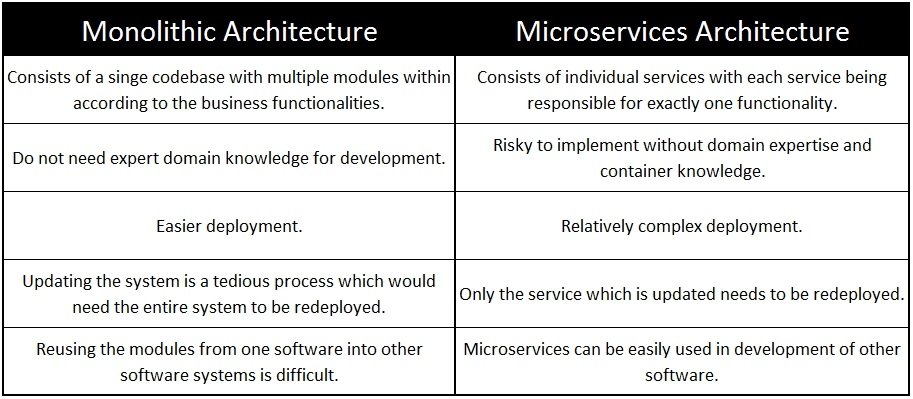
Overview of Cloud Architecture
Definition of Cloud Architecture
Cloud architecture can be described as the framework that consists of various components, both hardware and software, which enables the delivery of cloud services. Think of it as the blueprint for how cloud resources such as servers, storage, databases, and network configurations come together to provide seamless services to users.
This architecture is primarily based on:
- Front-end components: These are the interfaces that users interact with, such as web browsers or mobile applications.
- Back-end components: These manage the data processing, storage, and overall system architecture that supports the front-end functionalities.
- Cloud services: These can range from Infrastructure as a Service (IaaS) to Platform as a Service (PaaS) and Software as a Service (SaaS), each serving different business needs.
Importance of Cloud Architecture
Understanding cloud architecture is crucial for organizations aiming to leverage cloud technologies effectively. An optimal cloud architecture can lead to several benefits:
- Scalability: It allows organizations to scale resources up or down based on demand, ensuring that they only pay for what they use.
- Cost Efficiency: Businesses can significantly reduce overhead costs by utilizing cloud services rather than managing their on-premises infrastructure.
- Flexibility and Agility: Teams can deploy applications quickly and pivot their strategies accordingly without being bogged down by heavy infrastructure.
For example, when transitioning to a remote working model, a company might find cloud architecture essential to facilitate collaboration tools effectively, ensuring every team member remains connected.
Cloud architecture not only supports operational resilience but also fosters innovation by allowing businesses to experiment with new applications without heavy investments. In essence, it is the backbone of modern IT strategies that empowers organizations to stay competitive in today’s fast-paced digital landscape.
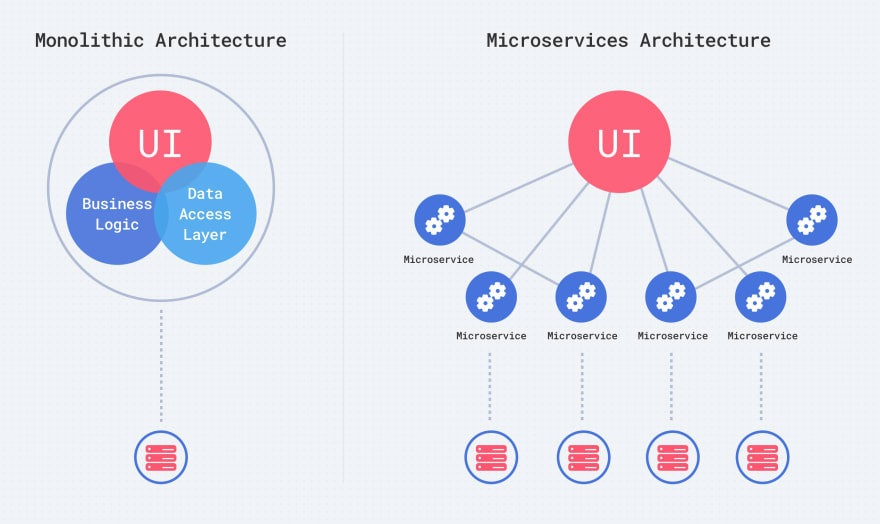
Monolithic Architecture
Characteristics of Monolithic Architecture
Monolithic architecture is a traditional approach where an application is developed as a single, indivisible unit. This means that all components, such as user interfaces, business logic, and databases, are interconnected within a single codebase. Here are some key characteristics:
- Single Deployment: The entire application is deployed simultaneously, resulting in an all-or-nothing update approach.
- Tightly Coupled Components: The components of a monolithic application are tightly coupled, meaning that changes in one area may impact others.
- Shared Codebase: A unified codebase facilitates centralized version control and streamlined development processes.
As a personal touch, consider the experience of a small e-commerce business transitioning from a simple website to a monolithic application. Initially, it simplifies management, but as they grow, complexity starts to surface.
Advantages and Disadvantages
Advantages:
- Simplicity: Easier to develop, test, and deploy, especially for smaller applications.
- Efficient Performance: Reduced latency due to fewer inter-process communication requirements.
- Unified User Experience: Offers consistent user interaction across the application.
Disadvantages:
- Scalability Issues: Scaling the entire application becomes necessary instead of scaling specific components, which can be resource-intensive.
- Longer Deployment Times: Any updates mean redeploying the entire application, leading to potential downtime.
- Difficult Maintenance: Over time, as the application grows, maintaining a monolithic structure can become cumbersome.
Use Cases
Monolithic architecture is particularly well-suited for specific scenarios:
- Small to Medium-Sized Applications: Startups or MVPs (Minimum Viable Products) that need to launch quickly.
- Less Complex Systems: Projects that do not anticipate needing extensive features or scalability.
- Tightly Integrated Systems: When components are highly interdependent and may not benefit from the modular structure.
In summary, while monolithic architecture has its perks in simplicity and performance, businesses must weigh these against challenges around scalability and maintainability, particularly as they grow.
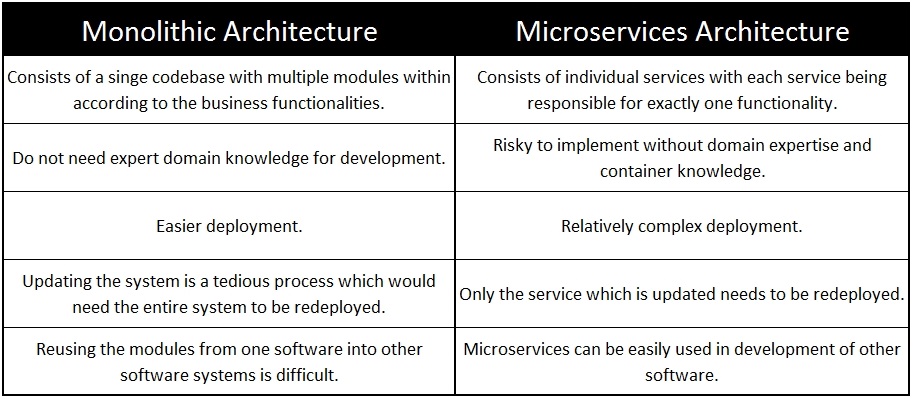
Microservices Architecture
Characteristics of Microservices Architecture
Microservices architecture is a contemporary approach that structures an application as a collection of small, loosely coupled, and independently deployable services. Each service focuses on a specific business function, allowing for specialized development and maintenance. Here are some defining characteristics:
- Decentralized: Unlike monolithic architectures, microservices promote decentralized data management, with each service managing its own data.
- Independent Deployability: Services can be developed, deployed, and scaled independently, reducing the impact of changes on the overall application.
- Technology Agnostic: Teams can choose the best technology stack for each microservice, enhancing overall system flexibility.
Imagine a financial services company divided its application into different microservices, such as payments, user management, and reporting, allowing teams to innovate at their own pace without disrupting others.
Advantages and Disadvantages
Advantages:
- Scalability: Each service can be scaled independently, allowing for cost-effective resource management.
- Enhanced Resilience: If one microservice fails, the rest can continue functioning, thus improving reliability.
- Faster Development: Smaller teams can work on individual services simultaneously, speeding up delivery times.
Disadvantages:
- Complexity: Managing multiple services can lead to increased operational complexity, requiring robust orchestration tools.
- Data Consistency Challenges: Ensuring data consistency across services can be complicated and may require additional mechanisms.
- Higher Initial Overhead: Setting up a microservices architecture might involve significant upfront effort and resources.
Use Cases
Microservices architecture shines in various scenarios:
- Large-Scale Applications: Organizations with extensive systems that demand rapid scaling and flexible development cycles.
- Frequent Updates: Enterprises that need to roll out features or fixes without affecting the entire application.
- Diverse Product Offerings: Companies needing to integrate diverse technologies and services under a unified ecosystem.
In conclusion, microservices architecture suits businesses aiming for agility and resilience, enabling rapid growth and evolution while managing the inherent complexities that come along with it.
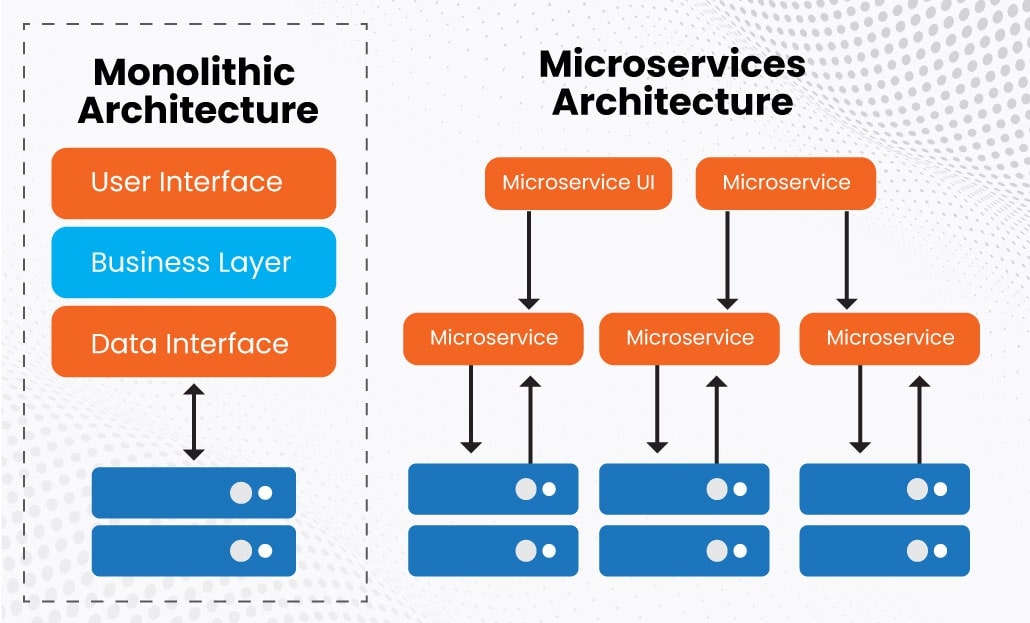
Comparison between Monolithic and Microservices
In evaluating cloud architectures, it’s essential to understand the differences between monolithic and microservices approaches. Each has its strengths and weaknesses, particularly in key areas such as scalability, flexibility, and maintenance.
Scalability
When it comes to scalability, microservices architecture shines. Since each service operates independently, organizations can scale specific components based on demand. For instance, if a payment processing service experiences high traffic during holiday sales, it can be scaled without needing to adjust the entire application.
- Monolithic Architecture: Requires scaling the whole application, which can be costly and resource-intensive.
- Microservices Architecture: Allows for targeted scaling of only the components that require it, optimizing resource allocation.
Flexibility
Flexibility in development and deployment is another crucial difference. Microservices allow teams to work on different services simultaneously using diverse technologies, which is a significant advantage in a fast-evolving tech landscape.
- Monolithic Architecture: Changes in one part of the application can lead to cascading effects, creating bottlenecks and hindering innovation.
- Microservices Architecture: Each team can adopt tools and processes that suit their specific needs, leading to faster iterations and innovations.
Maintenance
In terms of maintenance, microservices can initially seem more complex but ultimately provide clearer paths for updating services independently.
- Monolithic Architecture: Updates require comprehensive testing and deployments, increasing the risk of downtime.
- Microservices Architecture: Smaller, regularly scheduled updates reduce the risk associated with change and enable teams to quickly address issues as they arise.
Ultimately, the choice between monolithic and microservices architecture should align with your organization’s goals, size, and growth potential, as both architectures have their distinct advantages and challenges. Understanding these differences allows businesses to make informed decisions that support their strategic objectives.

Key Considerations for Choosing Between Monolithic and Microservices
When deciding between monolithic and microservices architectures, several factors play a pivotal role. Understanding these considerations can guide organizations towards the best architectural choice that aligns with their operational needs and future growth plans.
Team Structure
The structure of your development team is crucial. In a monolithic architecture, where components are tightly integrated, a smaller, more centralized team can manage the project effectively. This can lead to faster decision-making and smoother collaboration.
- Monolithic Teams: Typically composed of a unified group responsible for the entire application, allowing for cohesive development.
- Microservices Teams: Best suited for larger organizations where different teams can own specific services, promoting a culture of autonomy and specialization.
Consider, for instance, a startup with a small team that may thrive on a monolithic structure, while a large tech firm could leverage microservices to enable cross-functional teams to innovate independently.
Project Size
The size of the project directly influences the choice of architecture.
- Smaller Projects: For projects with defined scopes and functionalities, a monolithic approach often simplifies development and reduces time to market.
- Larger Projects: As the complexity grows, microservices can offer better modularity, allowing teams to tackle diverse features without impacting the entire system.
An entrepreneur launching a niche application may find a monolith effective, whereas a large enterprise system with varied components might benefit from the flexibility of microservices.
Deployment Frequency
How often you need to deploy updates also impacts the choice of architecture.
- Frequent Deployments: If your organization demands rapid, iterative releases, microservices allow for independent updates without downtime or risk to the entire application.
- Infrequent Deployments: Conversely, a monolithic structure can suffice for projects where releases are less frequent and major updates are planned.
For example, a SaaS company aiming for continuous development would likely favor microservices, as opposed to a traditional software vendor that releases major upgrades annually.
In conclusion, carefully evaluating team structure, project size, and deployment frequency can provide valuable insights as organizations decide between monolithic and microservices architectures, ensuring a strategic fit for their unique operational context.

Case Studies
Real-world implementations often illuminate the practical differences between monolithic and microservices architectures. Exploring case studies can help contextualize the theoretical knowledge we’ve gained so far in this journey.
Monolithic Architecture Implementation Example
One illustrative example of monolithic architecture is the early version of Spotify. When it was initially launched, the music streaming service was built as a monolithic application. This streamlined setup allowed them to focus on building core features quickly while maintaining a single codebase.
- Advantages:
- Rapid Development: The small team was able to push updates efficiently.
- Simplicity: Fewer moving parts made it easier to manage deployments.
However, as user demand surged and the feature set expanded, Spotify faced challenges with scalability and maintenance. Updates became complex, and the time to deploy new features increased. This notable experience highlighted the need for adaptability, prompting Spotify to eventually transition to a microservices architecture.
Microservices Architecture Implementation Example
Conversely, Netflix serves as a prime example of microservices in action. In their early days, Netflix operated on a monolithic system. As they grew, their need for a robust, scalable system that could support millions of users led them to adopt microservices.
- Implementation:
- Independent Services: Each microservice manages a specific function—like user recommendations, streaming, and billing—allowing for independent scaling and deployments.
- Resilience: The overall system remains operational even if one service encounters issues, ensuring uninterrupted service for users.
By fully embracing microservices, Netflix reduced the complexity of development and deployment, enabling rapid innovation cycles that align with user expectations in a fast-paced digital environment.
Through these case studies, it’s clear that choosing the right architecture significantly impacts both operational efficiency and the ability to scale, adapt, and innovate within today’s dynamic technological landscape.
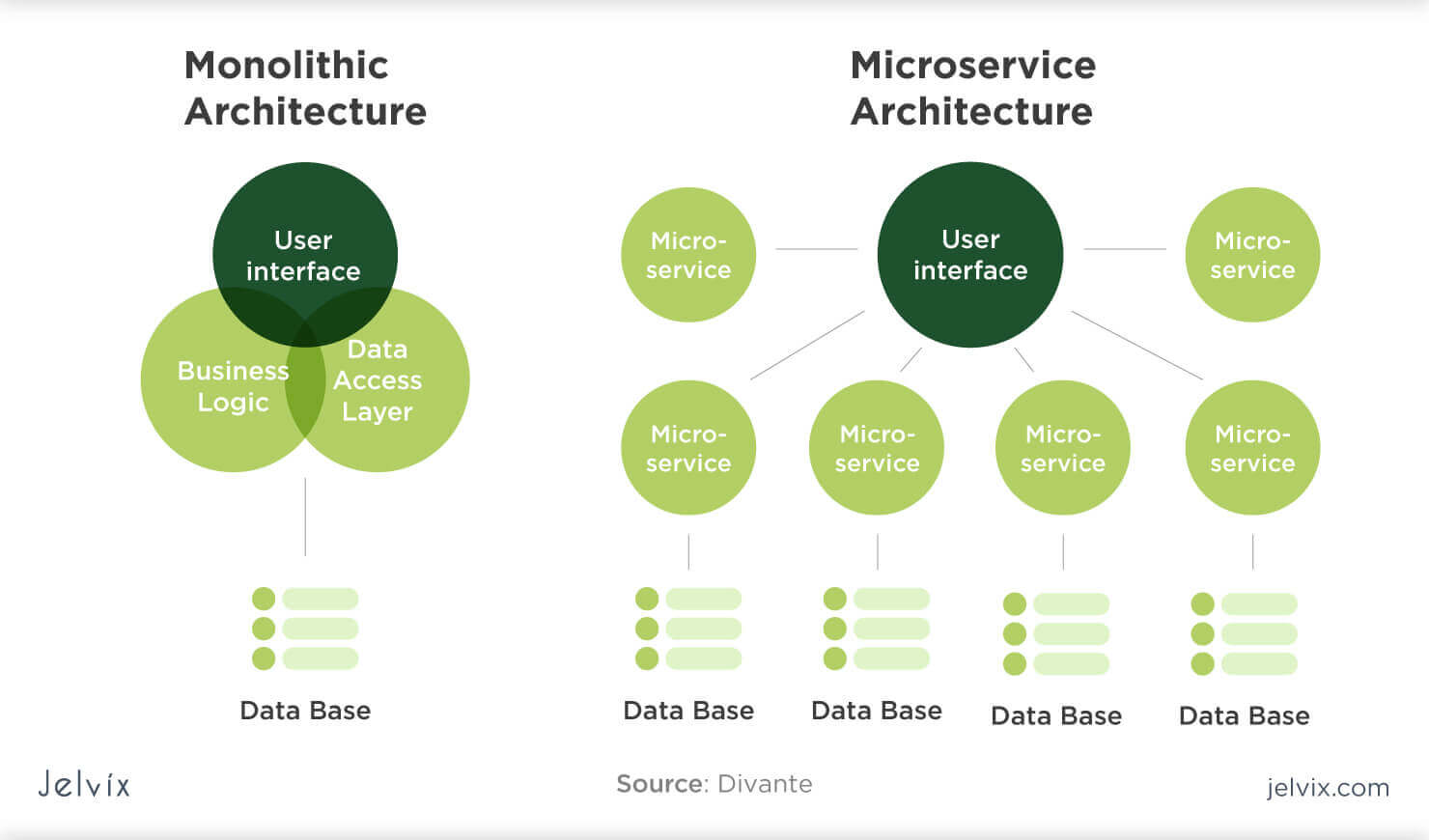
Future Trends in Cloud Architecture
As the technological landscape continues to evolve, so too does cloud architecture. Understanding emerging trends can help organizations prepare for the future and guide their decision-making processes.
Evolution of Cloud Architectures
Cloud architectures have come a long way since their inception. Initially dominated by monolithic designs, the shift to microservices has propelled innovation by promoting flexibility and scalability. This evolution is also marked by advancements in technologies such as serverless computing and containerization.
- Serverless Computing: Platforms like AWS Lambda and Azure Functions allow developers to build applications without managing servers, enabling cost-effective scaling and faster deployment cycles.
- Containerization: Tools like Docker and Kubernetes provide environment consistency and streamline the deployment of microservices, making it easier to manage and orchestrate services effectively.
This transition creates opportunities for organizations to create more resilient, efficient, and adaptable cloud solutions to meet the growing demands of users.
Predictions for the Future of Monolithic and Microservices
Looking ahead, it’s vital to consider how both monolithic and microservices architectures will evolve.
- Monolithic Architecture: While this approach may continue to serve smaller applications and startups effectively, we may see hybrid models develop where certain components are modularized while maintaining a core monolithic structure. This allows for both simplicity and manageable complexity.
- Microservices Architecture: The trend towards microservices is expected to solidify, particularly as organizations embrace DevOps practices and look for faster deployment cycles. Expect to see improvements in tools and methodologies aimed at simplifying microservices management, making them more accessible to businesses of all sizes.
For instance, businesses might benefit from advancements in automated tooling for service discovery and API management, further streamlining microservices interactions.
In summary, the future of cloud architecture holds exciting opportunities for both monolithic and microservices models. Organizations can confidently embrace these emerging trends, aligning their strategies with evolving technologies while fostering innovation and efficiency in their operations.
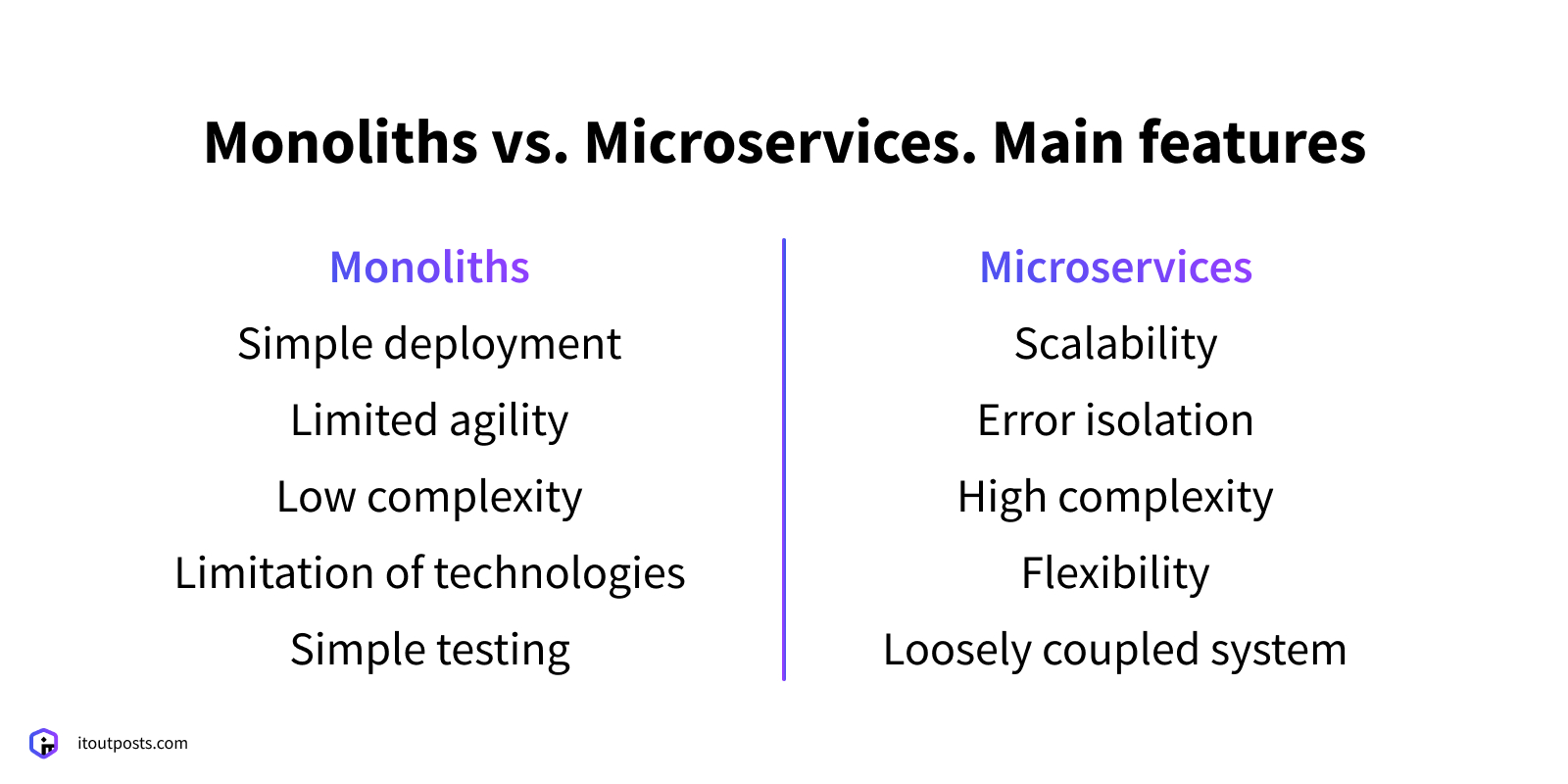
Conclusion
As we wrap up our exploration of cloud architecture, it’s essential to review the main differences between monolithic and microservices architectures. Understanding their unique characteristics can empower organizations to make informed decisions that align with their strategic goals.
Recap of the Main Differences
- Structure: Monolithic architecture consists of a single, unified codebase, making it simpler and easier to manage initially. In contrast, microservices break applications into smaller, independent services that can be developed and deployed separately.
- Scalability: Microservices offer enhanced scalability, allowing teams to scale individual components based on demand, whereas monolithic applications require scaling the entire system.
- Development Speed: Microservices enable faster deployment cycles by allowing parallel development across teams, while monolithic setups can lead to longer deployment times due to their interconnected nature.
For example, a rapidly growing startup might benefit from a microservices approach to quickly adapt to changing market demands, while a local business launching a simple application might find a monolithic design more manageable.
Final Recommendations
When deciding between monolithic and microservices architectures, organizations should consider their specific needs:
- Evaluate Project Size: Smaller projects with limited functionalities may thrive on a monolithic structure.
- Assess Team Structure: If you have multiple teams with diverse expertise, lean towards microservices for targeted ownership and flexibility.
- Consider Future Growth: Anticipate scalability and frequent changes; choose microservices to future-proof your application.
Ultimately, whichever architecture you choose should align with your business goals, project size, and operational capacities. The right decision will set your organization on a path toward sustainable growth and success in the ever-evolving digital landscape. Embracing these architectures can not only improve efficiency but also foster innovation, ensuring that you remain competitive in your industry.
